We hunters tend to love sharp things, especially knives. Personally, I am a sucker for arrows, broadheads and knives. Specifically fixed-blade hunting knives. Last year, I began working on a project where I wanted to test my skills with a fixed-blade knife for hunting use and for bushcrafting. So, for the better part of a year, I have been field-testing the Shay Butler Knives Intrepid by putting it through a series of outdoor challenges.
If you want to hear Shay’s story on why he started knife making, I highly recommend talking to him, but in a pinch you can read it in the About section of his website.
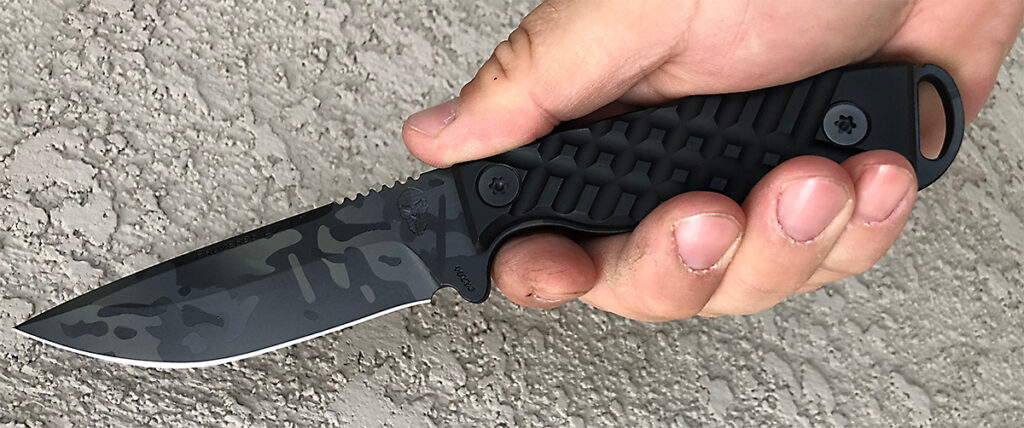
Disclaimer: I am no survivalist or bushcrafter. I am a hunter through-and-through, but I do make my own fires and shelters from time to time.
| Blade Length | Knife OAL | Blade Thickness | Advertised Weight (Knife) | Actual Weight (Knife) | Weight (+Sheath) | Steel |
| 4″ | 9″ | .180″ | 6.8 oz | 6.8 oz | 9.3 oz | Stainless Steel with full heat treat |
Two important facts to consider: The Intrepid is Made in the USA and carries a Lifetime Warranty.
Creating a Featherstick
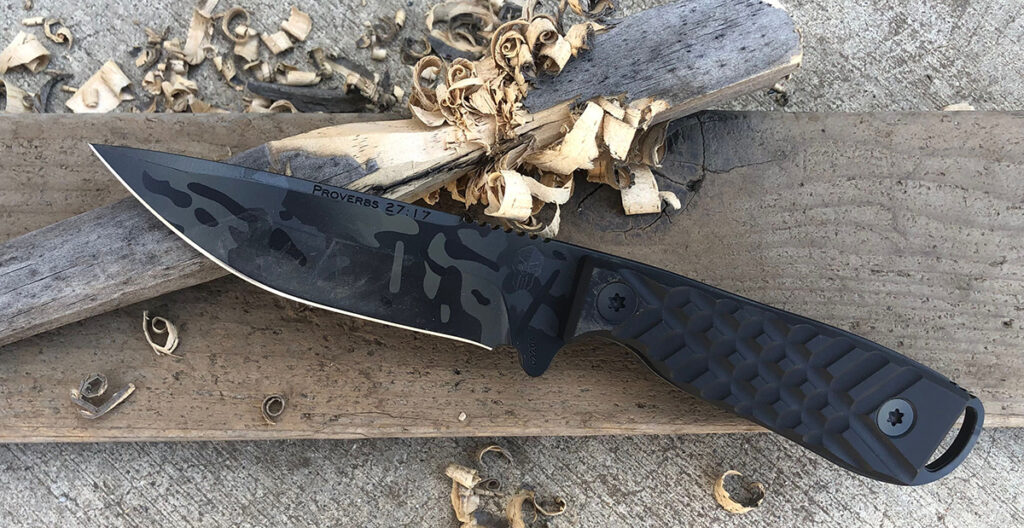
The Intrepid was razor sharp out of the box. My first impressions were that the knife was lightweight, wicked sharp and had a cool design. What through me off-guard was the handle. It looked awkward and bulky. I wasn’t sure how well it would work in the field, but I reserved full judgment until after I had used it.
With little-to-no bushcrafting skills, I began testing the Intrepid out with some simple tasks; making feathersticks, shaving bark, splitting wood and making a fire. It took me some time to get used to making a featherstick because the available wood was near a dried up riverbed. The Intrepid challenged me for making feathersticks properly, due to it being so sharp and having a steep angled blade.
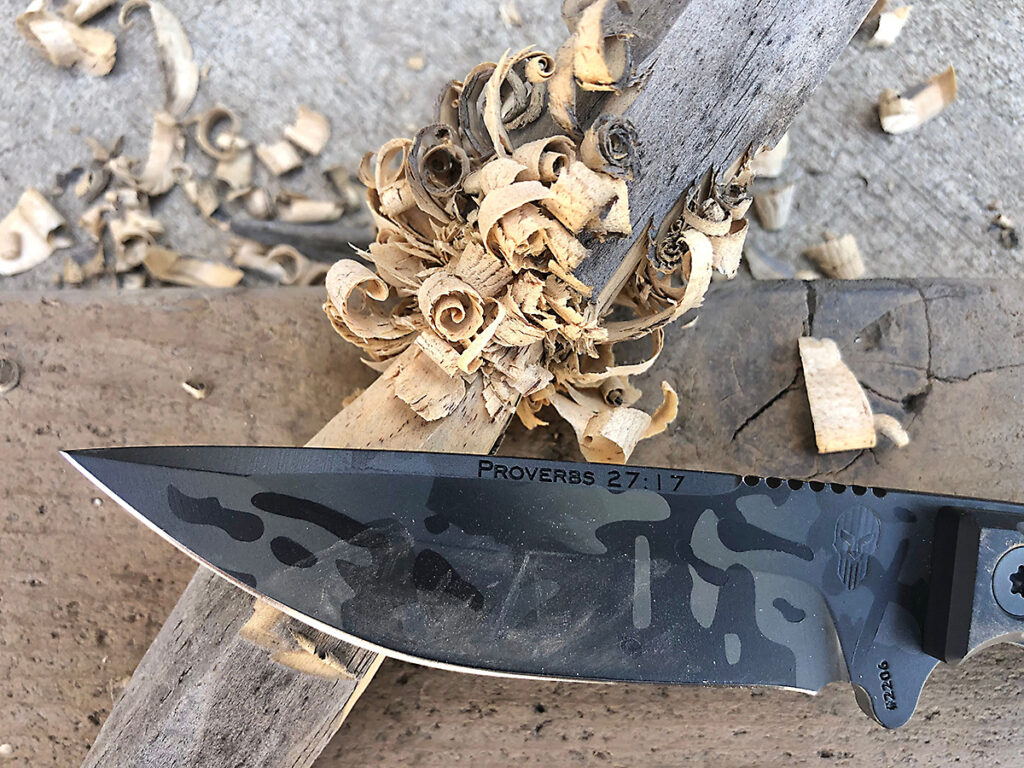
Shaving Bark
I found that shaving bark took a little less control as making a featherstick and the process went faster because I didn’t have to keep the shavings attached to the stick. As I tried different ways to shave the bark into thin strips, the Intrepid was easy to manipulate and control.
Splitting Wood
I split some small logs by using a baton with the Intrepid by placing the blade in the center, striking the spine with the baton until it drove through the log well enough to split. This was all new to me, as I had never done it, but I had seen it some many times. Thank you, YouTube. The Intrepid, with its rigid handle was easy to hold, strike and split small logs. It cut through the wood with ease and made it fun. It did remove some of the Cerakote on the knife, but I was OK with that. I needed to test the knife fully and it shows some use now.
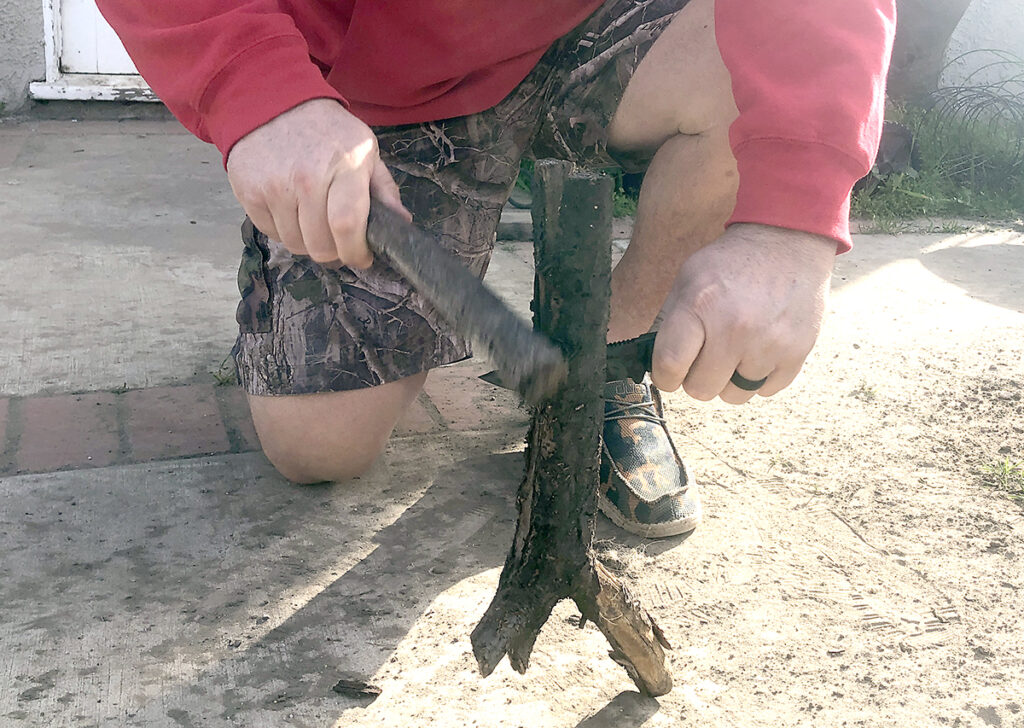
Starting a Fire
The Intrepid did not have any additional equipment with it in order to start a fire. I combined it with a Ferro rod and that worked well enough. It wouldn’t be my first choice for starting a fire.
Processing Game
The next step was processing wild game. I did not give the Intrepid a new edge going into this test. I could have, but I wanted to see how sharp it would remain throughout the field test. I used it to field dress, skin, debone, cut each section of the deer apart and then butcher. I worked hard at punishing it by hitting bone, trimming silver skin and then grinding it into the cutting board. Why? Let’s face it, it happens and I wanted legitimate results.
Processing a deer with the Intrepid forced me to slow down and be sure not to cut myself. Trust me when I say the Intrepid was still sharp after processing firewood.
Field Dressing
Razor sharp, lightweight, and the grooved handle allowed blood and fluid to drain while allowing my hand to keep a perfect grip. Forget my first impressions of the handle. It is designed to allow a solid grip throughout and it worked well.
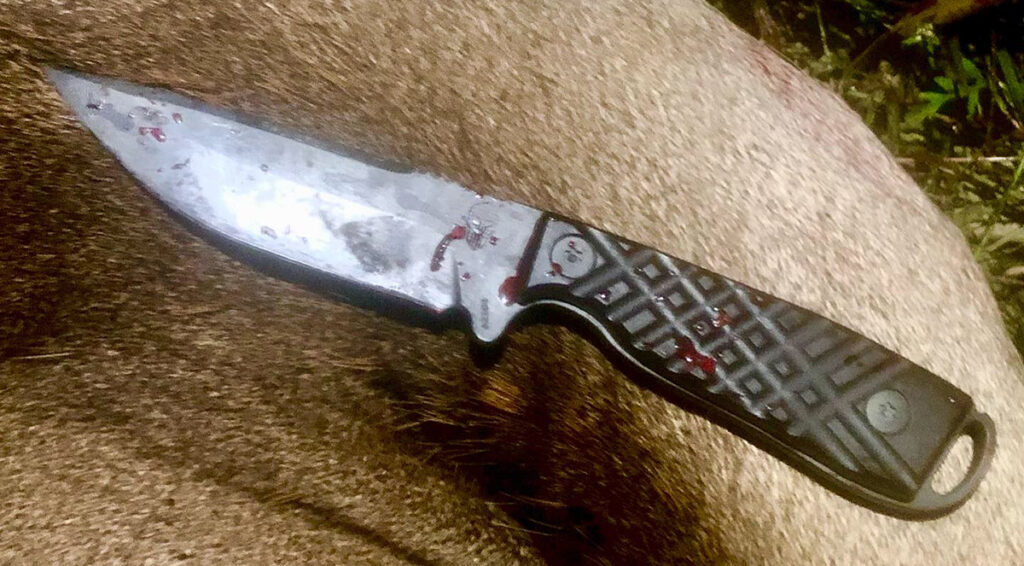
Skinning and Quartering the Deer
Easy to control and being so sharp, the Intrepid allowed me to work quickly and efficiently. The grooved handle allowed blood to settle away from my hand. The sharp point allowed me to get into crevices easily.
Cutting up the Meat (Trimming, Silver skin removal, Cutting to size)
At this point, the Intrepid needed a honed edge. I had heard that you could process three elk without sharpening the blade, but I was splitting firewood and digging into bone, and that gave it some battle scars. I gave it a tune-up using a ceramic rod before I removed tallow, silver skin, and then cut my venison into manageable portions for vacuum sealing.
The grooved grip was great while cutting bloody meat and it was very comfortable in my hand. I did not feel any fatigue in my wrist or forearm.
The Intrepid comes in a soft-sided zippered case. It’s been years since I had my hunting knife attached to my belt loop, so this worked well for me. That being said, I do like being able to carry on my belt occasionally. Shay has now developed a Kydex sheath for those of us who do like to carry it outside our pack.
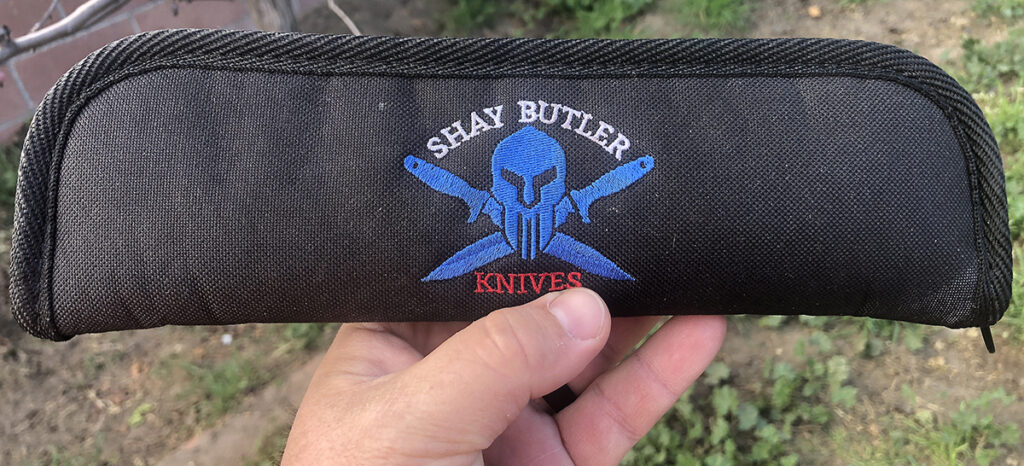
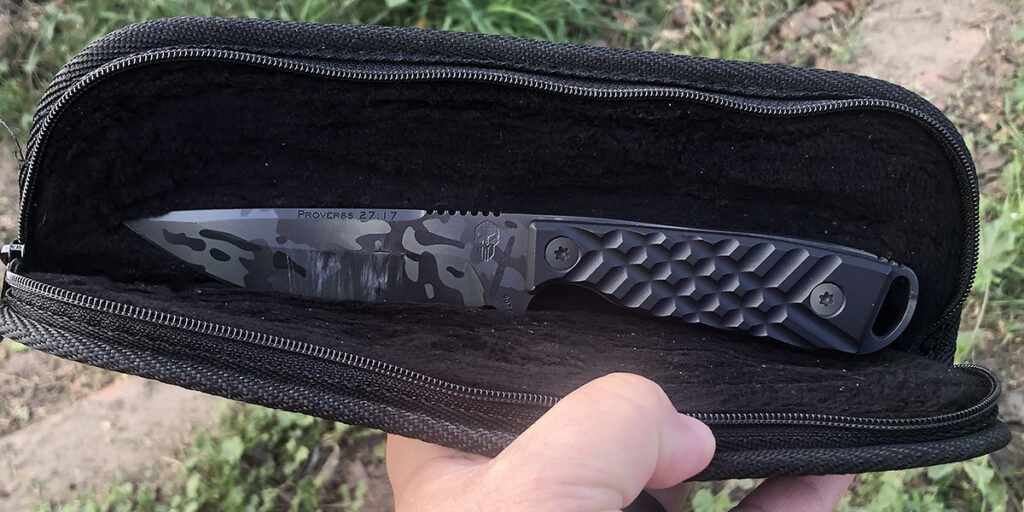
Sharpening is easy with a ceramic rod, but Shay mentioned that he often recommends owners to send their knife in once a year and he will sharpen the entire blade. That’s a great service to offer and I will be taking him up on that!
The Shay Butler Intrepid was well-used during many months of testing and worked great. Yes, a bushcraft knife can be used as a hunting tool and vice versa. So what did I think of the Shay Butler Intrepid? Personally, I feel the Intrepid is one of THE best knives I have used and fits me better as a hunter who dabbles in bushcraft. As the knife is handmade by Shay Butler himself, look at purchasing the Intrepid as an investment as it will be $525.00. This knife can be used for multiple tasks and can be handed down to your children. I highly recommend purchasing one and tell Shay that The SoCal Bowhunter sent you!
Be sure to check out the Shay Butler Knives Instagram page for regular updates and new knife builds.
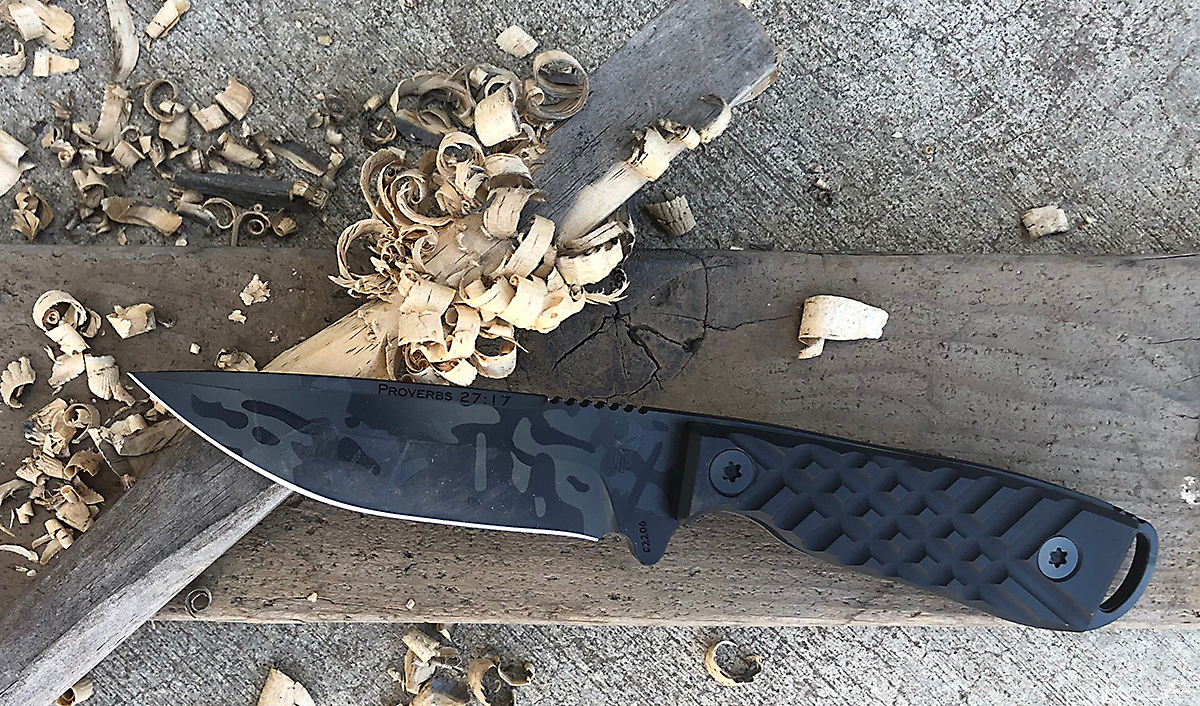
Be First to Comment